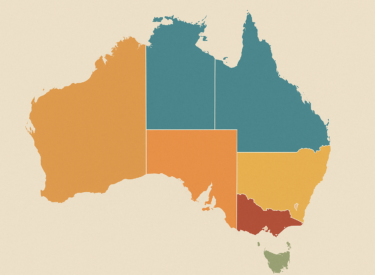As we step into the next decade, Australia finds itself at a pivotal juncture in its demographic trajectory.
Data from ABS show that Australia's population (now 27 million) is projected to reach between 34.3 and 45.9 million people by 2071.
In fact, the current ten-year average annual growth rate (1.4%) is projected to decline to between 0.2% and 0.9%.
Meanwhile, the median age (38.5 years) is projected to increase to between 43.8 and 47.6 years.

Projection on population size and change
Projections from the ABS show that Australia's population (now 27 million) is projected to:
- increase by an annual average of between 1.2% and 1.7% until June 2032
- grow by an annual average of between 0.6% and 1.1% per year over the entire projection period
- reach between 29.2 and 30.8 million people by 2032, and between 34.3 and 45.9 million people by 2071
The ABS said that an assumption of zero net overseas migration has been included to demonstrate the trajectory of Australia's future population relying entirely on natural increase.
There were 300,700 births and 183,300 deaths during 2021-22, resulting in a natural increase of 117,400 people.
- The number of births is projected to increase to between 284,700 and 482,700 births per year by 2071.
- The number of deaths is projected to reach between 378,200 and 402,800 by 2071.
- Natural increase is projected to be between 118,000 (a decrease) and 104,500 people in 2071.

The ABS said that overseas migrant arrivals are assumed to exceed departures, resulting in positive net overseas migration between 9.2 million to 14.3 million in total between 2022 and 2071.

States and territories projections
Data from ABS show that the high and medium series both project population growth for all states and territories between 2022 and 2071.
The low series projects growth for all states and territories except South Australia and Tasmania which would start to decline in 2039 and 2029 respectively.
New South Wales is projected to remain the largest state in all series, reaching over 9 million between 2028 and 2032.
By 2032:
- New South Wales is projected to reach between 9.0 and 9.7 million people
- Victoria's population is projected to reach between 7.6 and 8.2 million people
- Queensland is projected to reach between 6.0 and 6.4 million people
- Western Australia is projected to reach between 3.0 and 3.3 million
- South Australia's population is projected to be between 1.9 and 2.1 million
- Tasmania's population is projected to increase to between 579,600 and 645,600
- the Northern Territory's population is projected to reach between 263,900 and 312,400
- the population of Australian Capital Territory is projected to reach between 504,800 and 564,200 people. Its medium scenario is projected to exceed Tasmania's medium series population by the year 2048
Capital cities projections
At 30 June 2022, 67% of Australians lived in capital cities. This proportion is projected to increase to 68% by 2032.
Melbourne is projected to be the largest city in Australia by 2071 with a projected population between 6.5 million and 9.9 million, surpassing Sydney between 2032 and 2046.
- Sydney is projected to remain constant or increase from 65% of the state's population in 2022 to 66% in 2032.
- Melbourne is projected to remain constant or increase from 76% of Victoria in 2022 to 77% in 2032.
- Brisbane is projected to increase from 49% of Queensland's population to between 50% and 51% in 2032, becoming the majority part of Queensland's population.
- Adelaide is projected to grow from 78% in 2022 to between 79% and 80% in 2032.
- Perth is projected to remain constant or increase from 80% to 81%.
- Hobart is projected to increase its share of Tasmania's population, from 44% in 2022 to between 45% and 46% in 2032.
- Darwin is projected to remain constant or increase its share of the territory’s population from 60% in 2022 to 61% in 2032.














